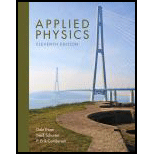
Applied Physics (11th Edition)
11th Edition
ISBN: 9780134159386
Author: Dale Ewen, Neill Schurter, Erik Gundersen
Publisher: PEARSON
expand_more
expand_more
format_list_bulleted
Textbook Question
Chapter 6, Problem 2AC
An automobile accident causes both the driver and passenger front airbags to deploy. (a) If the vehicle was traveling at a speed of 88.6 km/h and is now at rest, find the change in momentum for both the 68.4-kg adult driver and the 34.2-kg child passenger. (b) The adult took 0.564 s and the child took 0.260 s to come to rest. Find the force that the airbag exerted on each individual. Explain why airbags tend to be dangerous for children
Expert Solution & Answer
Want to see the full answer?
Check out a sample textbook solution
Chapter 6 Solutions
Applied Physics (11th Edition)
Ch. 6.1 - Find the momentum of each object. 1. m = 2.00 kg, ...Ch. 6.1 - Find the momentum of each object. 2. m = 5.00 kg, ...Ch. 6.1 - Find the momentum of each object. 3. m = 17.0...Ch. 6.1 - Find the momentum of each object. 4. m = 38.0 kg, ...Ch. 6.1 - Find the momentum of each object. 5. m = 38 105...Ch. 6.1 - Find the momentum of each object. 6. m = 3.84 kg, ...Ch. 6.1 - Find the momentum of each object. 7. Fw = 1.50 ...Ch. 6.1 - Find the momentum of each object. 8. Fw = 3200 lb,...Ch. 6.1 - a. Find the momentum of a heavy automobile...Ch. 6.1 - a. Find the momentum of a bullet of mass 1.00 103...
Ch. 6.1 - a. Find the momentum of an automobile of mass 2630...Ch. 6.1 - A ball of mass 0.50 kg is thrown straight up at...Ch. 6.1 - A bullet with mass 60.0 g is fired with an initial...Ch. 6.1 - A cannon is mounted on a railroad car. The cannon...Ch. 6.1 - A 125-kg pile driver falls from a height of 10.0 m...Ch. 6.1 - A person is traveling 75.0 km/h in an automobile...Ch. 6.1 - A 75.0-g bullet is fired with a muzzle velocity of...Ch. 6.1 - A 40.0-grain bullet is fired at a muzzle velocity...Ch. 6.1 - a. What force is required to stop a 1250-kg car...Ch. 6.1 - (a) What force is required to slow a 1350-kg car...Ch. 6.1 - What force is required to stop a 3000-kg truck...Ch. 6.1 - What force is needed to stop a piece of heavy...Ch. 6.1 - A standard 5.0-oz baseball is thrown and reaches a...Ch. 6.2 - One ball of mass 0.500 kg traveling 6.00 m/s to...Ch. 6.2 - A ball of mass 625 g traveling 4.00 m/s to the...Ch. 6.2 - A 0.600-kg ball traveling 4.00 m/s to the right...Ch. 6.2 - A 90.0-g disk traveling 3.00 m/s to the right...Ch. 6.2 - A 98.0-kg parts cart with rubber bumpers rolling...Ch. 6.2 - A 75.0-kg paint cart with rubber bumpers is...Ch. 6.2 - A railroad car of mass 2.00 104 kg is traveling...Ch. 6.2 - Find the velocity of the railroad cars in Problem...Ch. 6.2 - One cart of mass 12.0 kg is moving 6.00 m/s to the...Ch. 6.2 - One cart of mass 15.0 kg is moving 5.00 m/s to the...Ch. 6.2 - A 1650-kg automobile moving south 12.0 m/s...Ch. 6.2 - A 16.0-g bullet is shot into a wooden block at...Ch. 6.2 - A 2450-kg automobile moving north 12.0 m/s...Ch. 6.3 - Two motorcycles of equal mass collide at a 90...Ch. 6.3 - Two pickup trucks crash at a 90 intersection. If...Ch. 6.3 - Two vehicles collide at a 90 intersection. If the...Ch. 6.3 - Two vehicles of equal mass collide at a 90...Ch. 6.3 - A vehicle with a mass of 1000kg is going east at a...Ch. 6.3 - Ball A with a mass of 0.500 kg is moving east at a...Ch. 6.3 - A vehicle with mass of 950kg is driving east with...Ch. 6.3 - A vehicle with a mass of 800kg is traveling west...Ch. 6 - Momentum is a equal to speed times weight b equal...Ch. 6 - Impulse is a. a force applied to an object b. the...Ch. 6 - Why do a slow-moving loaded truck and a speeding...Ch. 6 - How are impulse and change in momentum related?Ch. 6 - Why is follow-through important in hitting a...Ch. 6 - Describe in your own words the law of conservation...Ch. 6 - Describe conservation of momentum in terms of a...Ch. 6 - One billiard ball striking another is an example...Ch. 6 - One moving loaded railroad car striking and...Ch. 6 - A father and 8-year-old son are standing on ice...Ch. 6 - A truck with mass 1475 slugs travels 57.0 mi/h....Ch. 6 - A projectile with mass 27.0 kg is fired with a...Ch. 6 - A box is pushed with a force of 125 N for 2.00...Ch. 6 - What is the momentum of a bullet of mass 0.034 kg...Ch. 6 - A 4.00-g bullet is fired from a 4.50-kg gun with a...Ch. 6 - A 150-kg pile driver falls from a height of 7.5 m...Ch. 6 - A 15.0-g bullet is fired at a muzzle velocity of...Ch. 6 - What force is required to slow a 1250-kg car...Ch. 6 - One ball of mass 575 g traveling 3.50 m/s to the...Ch. 6 - A railroad car of mass 2.25 104 kg is traveling...Ch. 6 - A 195-g ball traveling 4.50 m/s to the right...Ch. 6 - Two trucks of equal mass collide at a 90...Ch. 6 - Ball A, of mass 0.35 kg, has a velocity 0.75 m/s...Ch. 6 - A coach knows it is vital that the volleyballs be...Ch. 6 - An automobile accident causes both the driver and...Ch. 6 - Several African tribes engage in a ritual much...Ch. 6 - Sally, who weighs 125 lb, knows that getting out...Ch. 6 - An automobile accident investigator needs to...
Additional Science Textbook Solutions
Find more solutions based on key concepts
30. A circular test track for cars in England has a circumference of 3.2 km. A car travels around the track fro...
College Physics: A Strategic Approach (4th Edition)
Analyzing crystal diffraction is intimately tied to the various different geometries in which the atoms can be ...
Modern Physics
To become a negative ion, does an atom lose or gain electrons?
Conceptual Integrated Science
Radioactive oxygen-15 decays at such a rate that half the atoms in a given sample decay every 2 min. If a tube ...
Essential University Physics: Volume 2 (3rd Edition)
Calculate the average volume per molecule for an ideal gas at room temperature and atmospheric pressure. Then t...
An Introduction to Thermal Physics
Tycho Brahe’s contributions to astronomy included (a) inventing the telescope; (b) proving that Earth orbits th...
Life in the Universe (4th Edition)
Knowledge Booster
Learn more about
Need a deep-dive on the concept behind this application? Look no further. Learn more about this topic, physics and related others by exploring similar questions and additional content below.Similar questions
- A billiard player sends the cue ball toward a group of three balls that are initially at rest and in contact with one another. After the cue ball strikes the group, the four balls scatter, each traveling in a different direction with different speeds as shown in Figure P10.30. If each ball has the same mass, 0.16 kg, determine the total momentum of the system consisting of the four balls immediately after the collision. FIGURE P10.30arrow_forwardInitially, ball 1 rests on an incline of height h, and ball 2 rests on an incline of height h/2 as shown in Figure P11.40. They are released from rest simultaneously and collide elastically in the trough of the track. If m2 = 4 m1, m1 = 0.045 kg, and h = 0.65 m, what is the velocity of each ball after the collision?arrow_forwardA 5-kg cart moving to the right with a speed of 6 m/s collides with a concrete wall and rebounds with a speed of 2 m/s. What is the change in momentum of the cart? (a) 0 (b) 40 kg m/s (c) 40 kg m/s (d) 30 kg m/s (e) 10 kg m/sarrow_forward
- What external force is responsible for changing the momentum of a car moving along a horizontal road?arrow_forwardInitially, ball 1 rests on an incline of height h, and ball 2 rests on an incline of height h/2 as shown in Figure P11.40. They are released from rest simultaneously and collide in the trough of the track. If m2 = 4 m1 and the collision is elastic, find an expression for the velocity of each ball immediately after the collision. FIGURE P11.40 Problems 40 and 41.arrow_forwardAn estimated force-time curve for a baseball struck by a bat is shown in Figure P9.13. From this curve, determine (a) the magnitude of the impulse delivered to the ball and (b) the average force exerted on the ball. Figure P9.13arrow_forward
- A 2-kg object moving to the right with a speed of 4 m/s makes a head-on, elastic collision with a 1-kg object that is initially at rest. The velocity of the 1-kg object after the collision is (a) greater than 4 m/s, (b) less than 4 m/s, (c) equal to 4 m/s, (d) zero, or (e) impossible to say based on the information provided.arrow_forwardSand from a stationary hopper falls onto a moving conveyor belt at the rate of 5.00 kg/s as shown in Figure P8.64. The conveyor belt is supported by frictionless rollers and moves at a constant speed of v = 0.750 m/s under the action of a constant horizontal external force Fext supplied by the motor that drives the belt. Find (a) the sands rate of change of momentum in the horizontal direction, (b) the force of friction exerted by the belt on the sand, (c) the external force Fext, (d) the work done by Fext in 1 s, and (e) the kinetic energy acquired by the falling sand each second due to the change in its horizontal motion. (f) Why are the answers to parts (d) and (e) different? Figure P8.64arrow_forwardA soccer player runs up behind a 0.450-kg soccer ball traveling at 3.20 m/s and kicks it in the same direction as it is moving, increasing its speed to 12.8 m/s. (a) What is the change in the magnitude of the balls momentum? (b) What magnitude impulse did the soccer player deliver to the ball? (c) What magnitude impulse would be required to kick the ball in the opposite direction at 12.8 m/s, instead? (See Section 6.1.)arrow_forward
- What is the average momentum of an avalanche that moves a 40-cm-thick layer of snow over an area of 100 m by 500 m over a distance of 1 km down a hill in 5.5 s? Assume a density of 350kg/m3 for the snow.arrow_forwardA projectile of mass 2.0 kg is fired in the air at an angle of 40.0 to the horizon at a speed of 50.0 m/s. At the highest point in its flight, the projectile breaks into three parts of mass 1.0 kg, 0.7 kg, and 0.3 kg. The 1.0-kg part falls straight down after breakup with an initial speed of 10.0 m/s, the 0.7-kg part moves in the original forward direction, and the 0.3-kg part goes straight up. Launch a. Find the speeds of the 0.3-kg and 0.7-kg pieces immediately after the break-up. b. How high from the break-up point does the 0.3-kg piece go before coming to rest? c. Where does the 0.7-kg piece land relative to where it was fired from?arrow_forwardA ball of mass 250 g is thrown with an initial velocity of 25 m/s at an angle of 30 with the horizontal direction. Ignore air resistance. What is the momentum of the ball after 0.2 s? (Do this problem by finding the components of the momentum first, and then constructing the magnitude and direction of the momentum vector from the components.)arrow_forward
arrow_back_ios
SEE MORE QUESTIONS
arrow_forward_ios
Recommended textbooks for you
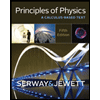 Principles of Physics: A Calculus-Based TextPhysicsISBN:9781133104261Author:Raymond A. Serway, John W. JewettPublisher:Cengage Learning
Principles of Physics: A Calculus-Based TextPhysicsISBN:9781133104261Author:Raymond A. Serway, John W. JewettPublisher:Cengage Learning Physics for Scientists and Engineers, Technology ...PhysicsISBN:9781305116399Author:Raymond A. Serway, John W. JewettPublisher:Cengage Learning
Physics for Scientists and Engineers, Technology ...PhysicsISBN:9781305116399Author:Raymond A. Serway, John W. JewettPublisher:Cengage Learning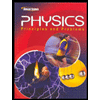 Glencoe Physics: Principles and Problems, Student...PhysicsISBN:9780078807213Author:Paul W. ZitzewitzPublisher:Glencoe/McGraw-Hill
Glencoe Physics: Principles and Problems, Student...PhysicsISBN:9780078807213Author:Paul W. ZitzewitzPublisher:Glencoe/McGraw-Hill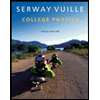 College PhysicsPhysicsISBN:9781285737027Author:Raymond A. Serway, Chris VuillePublisher:Cengage Learning
College PhysicsPhysicsISBN:9781285737027Author:Raymond A. Serway, Chris VuillePublisher:Cengage Learning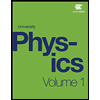 University Physics Volume 1PhysicsISBN:9781938168277Author:William Moebs, Samuel J. Ling, Jeff SannyPublisher:OpenStax - Rice University
University Physics Volume 1PhysicsISBN:9781938168277Author:William Moebs, Samuel J. Ling, Jeff SannyPublisher:OpenStax - Rice University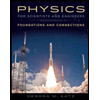 Physics for Scientists and Engineers: Foundations...PhysicsISBN:9781133939146Author:Katz, Debora M.Publisher:Cengage Learning
Physics for Scientists and Engineers: Foundations...PhysicsISBN:9781133939146Author:Katz, Debora M.Publisher:Cengage Learning

Principles of Physics: A Calculus-Based Text
Physics
ISBN:9781133104261
Author:Raymond A. Serway, John W. Jewett
Publisher:Cengage Learning

Physics for Scientists and Engineers, Technology ...
Physics
ISBN:9781305116399
Author:Raymond A. Serway, John W. Jewett
Publisher:Cengage Learning

Glencoe Physics: Principles and Problems, Student...
Physics
ISBN:9780078807213
Author:Paul W. Zitzewitz
Publisher:Glencoe/McGraw-Hill

College Physics
Physics
ISBN:9781285737027
Author:Raymond A. Serway, Chris Vuille
Publisher:Cengage Learning

University Physics Volume 1
Physics
ISBN:9781938168277
Author:William Moebs, Samuel J. Ling, Jeff Sanny
Publisher:OpenStax - Rice University

Physics for Scientists and Engineers: Foundations...
Physics
ISBN:9781133939146
Author:Katz, Debora M.
Publisher:Cengage Learning
Momentum | Forces & Motion | Physics | FuseSchool; Author: FuseSchool - Global Education;https://www.youtube.com/watch?v=DxKelGugDa8;License: Standard YouTube License, CC-BY